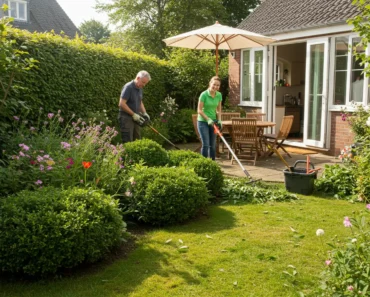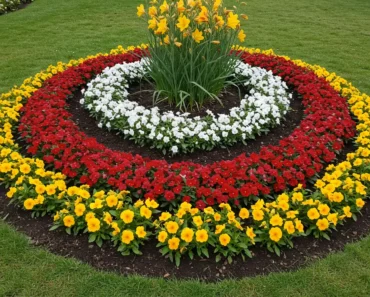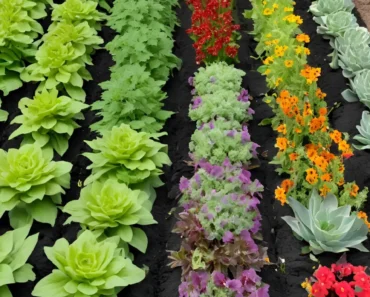Creating an impressive luxury house exterior requires careful attention to architectural details, premium materials, and timeless design principles. The exterior of your home serves as the first impression for guests and significantly impacts your property’s curb appeal and market value. With the right design elements, you can achieve a sophisticated look that reflects elegance and prestige.Luxury house exterior designs combine classic architectural styles with modern amenities and high-end finishes. These designs emphasize quality craftsmanship, attention to detail, and the use of premium materials that stand the test of time. Whether you’re building new or renovating an existing home, understanding these design principles helps create an exterior that exudes luxury and sophistication.
This comprehensive guide explores 20 classic luxury house exterior designs that have proven their appeal across different architectural styles and regional preferences. We’ll walk you through the key features, materials, and design elements that define each style, helping you choose the perfect approach for your dream home exterior.
Understanding Luxury House Exterior Design Fundamentals
Luxury house exterior designs distinguish themselves through superior materials, impeccable proportions, and sophisticated architectural details. These homes typically feature natural stone, high-quality brick, premium stucco, or cedar siding that ages beautifully over time. The combination of these materials creates visual interest while maintaining an cohesive, upscale appearance.
Proportion plays a crucial role in luxury exterior design. Windows are typically larger and strategically placed to create balance and symmetry. Rooflines often feature multiple levels and interesting angles that add visual complexity without appearing cluttered. Entry doors become focal points with substantial size, quality hardware, and surrounding architectural elements like columns or porticos.
Landscaping integration elevates luxury exteriors beyond simple architectural beauty. Professional landscape design complements the home’s style while creating seamless transitions between indoor and outdoor living spaces. Features like outdoor kitchens, fire pits, water features, and carefully planned garden areas enhance the overall luxury experience.
The color palette of luxury exteriors tends toward timeless, sophisticated hues. Neutral tones like warm grays, creams, and earth tones provide a backdrop that allows architectural details and premium materials to shine. Accent colors are used sparingly and strategically to highlight specific design elements.
Traditional Colonial Luxury Designs
Georgian Colonial Style
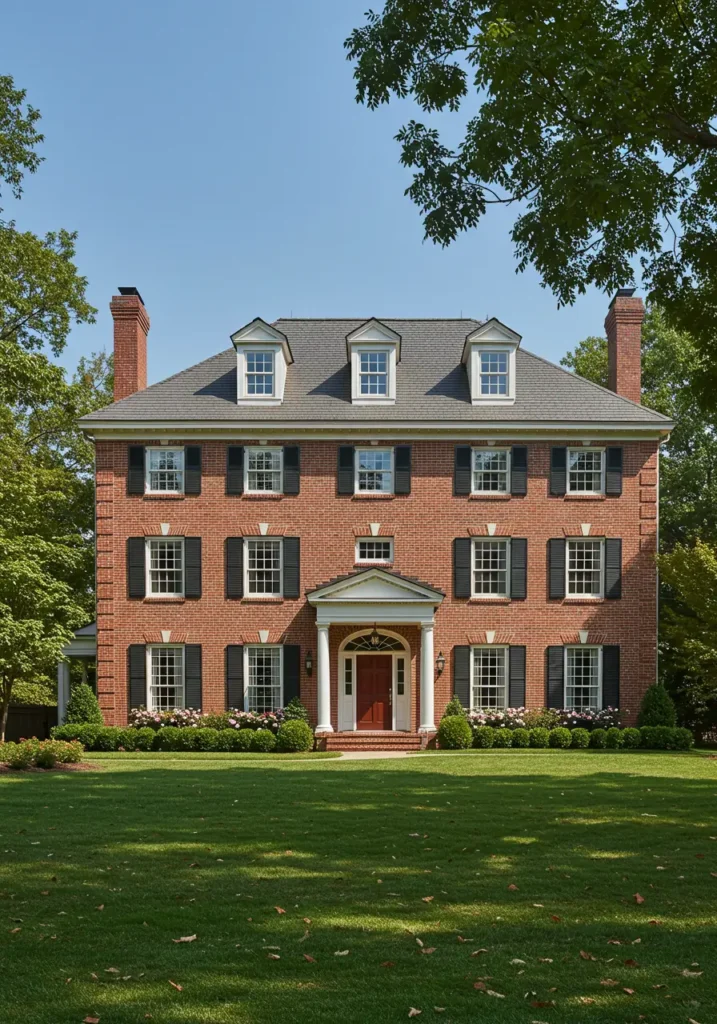
Georgian Colonial exteriors epitomize American luxury with their symmetrical facades and refined proportions. These homes feature centered front doors flanked by evenly spaced windows, typically arranged in a five-window configuration across the front. The roof is usually a simple gable or hip design that emphasizes the home’s balanced geometry.
Premium materials like handmade brick in traditional red or painted finishes create the foundation for Georgian luxury. Window shutters, when included, are functional rather than decorative, adding authentic period character. The front entrance often features a pediment supported by columns or pilasters, creating an impressive focal point that welcomes guests with classical elegance.
Modern luxury Georgian homes incorporate contemporary amenities while maintaining traditional proportions. Three-car garages are seamlessly integrated into the design, often positioned to the side or rear to preserve the facade’s symmetry. Dormer windows add charm while providing natural light to upper-level spaces.
Federal Style Elegance
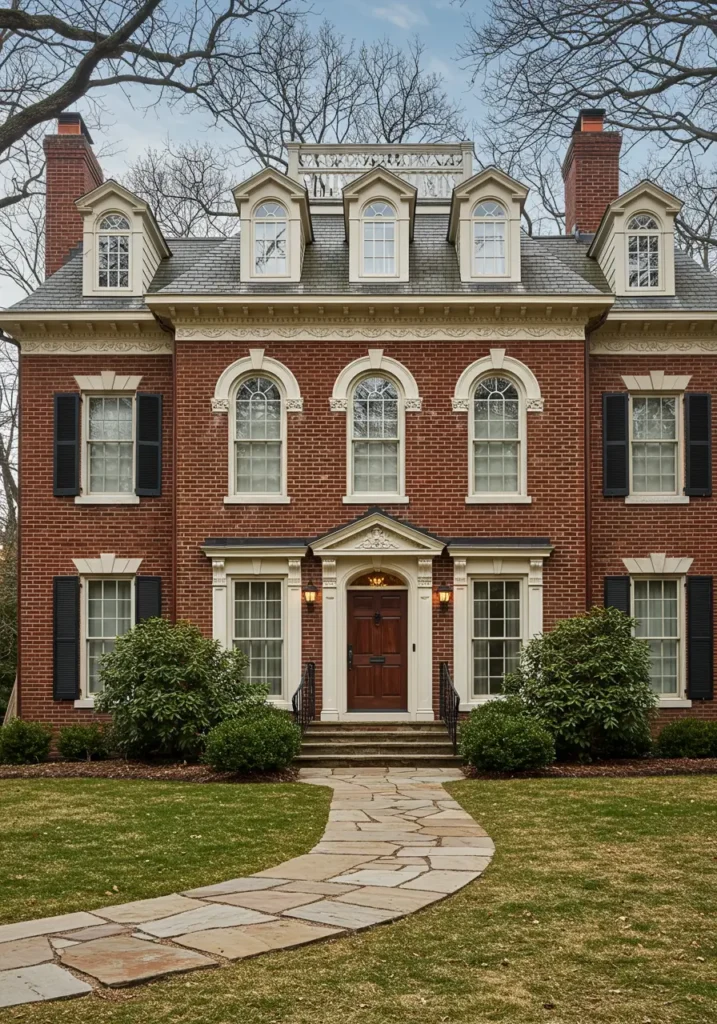
Federal style luxury homes refine Colonial design with more delicate details and sophisticated ornamentation. These exteriors feature elliptical or fan-shaped windows above the front door, side lights flanking the entrance, and decorative moldings that create visual interest without overwhelming the overall composition.
The brick or stone construction emphasizes craftsmanship through detailed mortar work and precisely cut materials. Window trim and corner boards in contrasting colors highlight the home’s architectural framework. Chimneys are often topped with decorative caps that reflect the period’s attention to even the smallest details.
Luxury Federal homes often incorporate curved elements like bow windows or rounded porches that soften the otherwise geometric design. These features create visual interest while maintaining the style’s characteristic refinement and restraint.
Mediterranean and Spanish Colonial Luxury
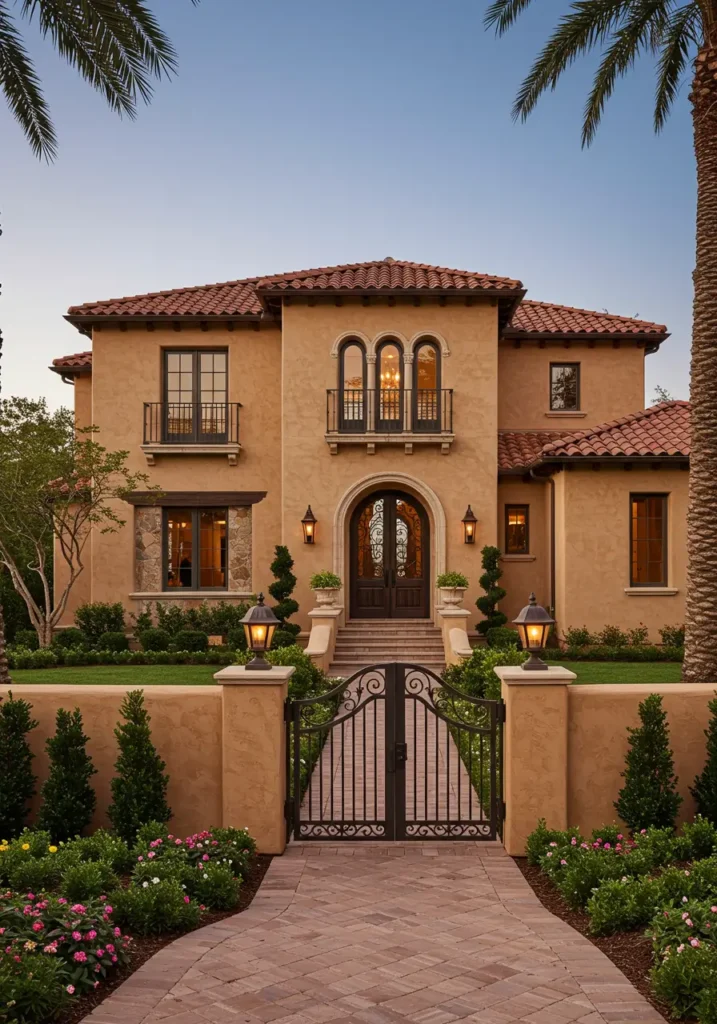
Mediterranean luxury house exteriors transport you to the sophisticated coastal regions of Spain and Italy. These designs emphasize outdoor living with extensive terraces, courtyards, and covered loggias that blur the lines between interior and exterior spaces. Red clay tile roofs create the signature Mediterranean silhouette while providing excellent durability in various climates.
Stucco walls in warm earth tones form the primary exterior surface, often textured to add visual interest and authenticity. Wrought iron details on windows, balconies, and gates provide security while maintaining the romantic Mediterranean aesthetic. Natural stone accents around doorways, window surrounds, and architectural features add luxury and permanence to the design.
Spanish Hacienda Style
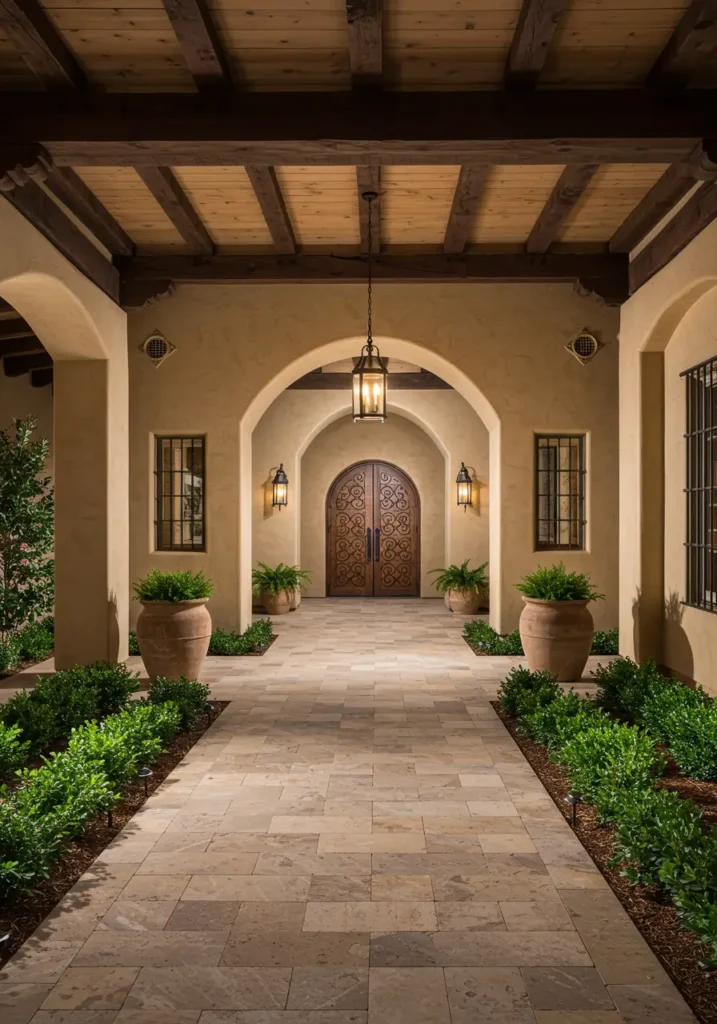
Spanish Hacienda luxury exteriors center around courtyards and outdoor entertaining spaces. These single-story homes spread horizontally across the landscape, creating intimate outdoor rooms protected by walls and covered walkways. Thick stucco walls provide excellent insulation while creating the substantial appearance associated with luxury construction.
Wooden beam details, or vigas, extend beyond the roofline to create shadow patterns and authentic Spanish character. Heavy wooden doors with wrought iron hardware serve as impressive entry points that set the tone for the entire home. Window grilles and decorative ironwork add security and visual interest while maintaining the historical Spanish aesthetic.
Italian Villa Inspiration
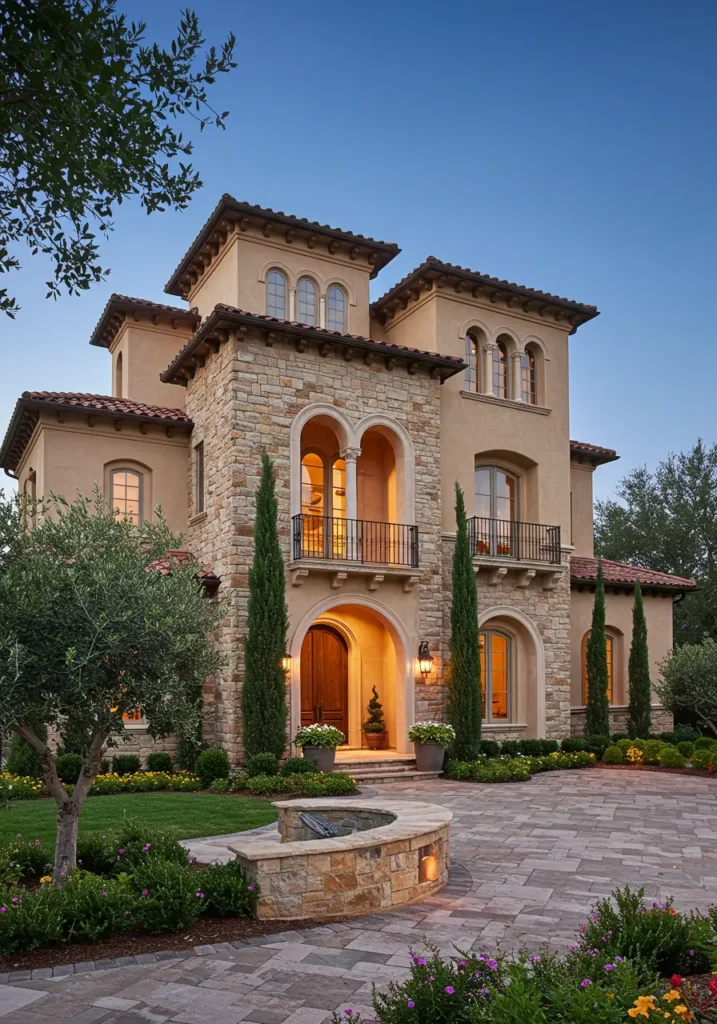
Italian Villa luxury exteriors emphasize vertical elements with tower-like structures and multi-level rooflines. These homes often feature asymmetrical designs that appear to have evolved over time, creating visual interest and architectural complexity. Natural stone and stucco combinations provide textural variety while maintaining color harmony.
Arched openings for windows, doors, and covered outdoor spaces create the characteristic Italian villa appearance. Balconies with decorative railings add romantic appeal while providing outdoor access from upper-level rooms. Cypress or olive trees in the landscaping complete the Mediterranean luxury experience.
French Country and Chateau Styles
French Provincial Luxury
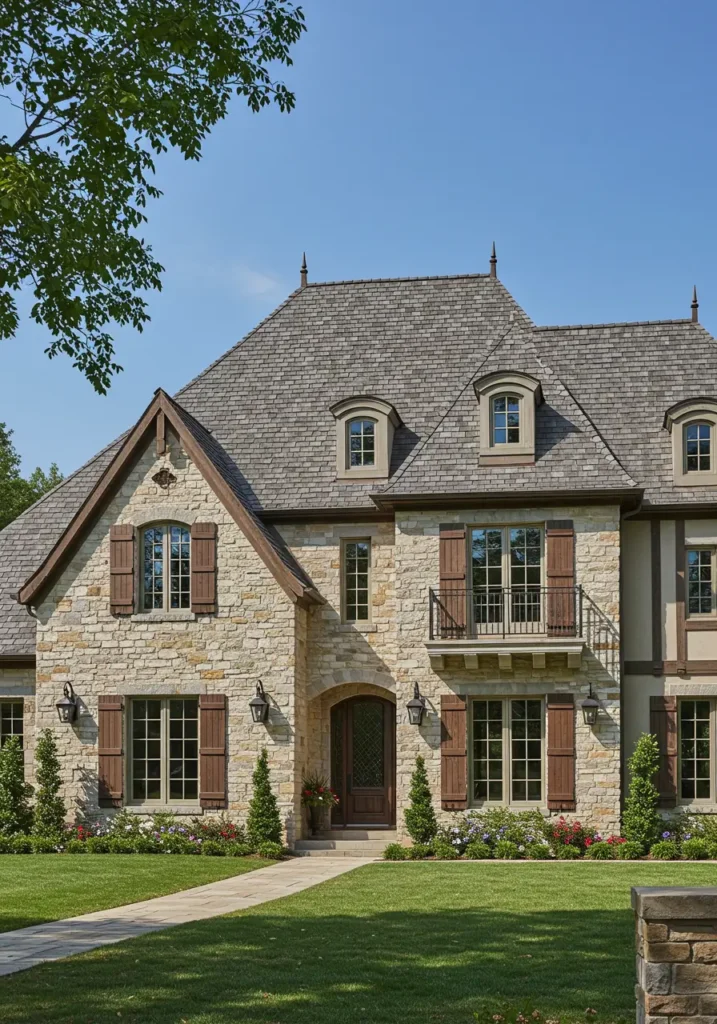
French Provincial exteriors combine rustic charm with sophisticated details. These homes feature steep-pitched roofs with dormer windows that create charming upper-level spaces. Natural stone, brick, or stucco walls provide the foundation, often combined with half-timbering details that add authentic French character.
Casement windows with divided lights maintain the traditional French aesthetic while providing excellent natural light. Wrought iron details on shutters, balconies, and entry gates add elegance and security. The overall effect is both welcoming and impressive, perfect for luxury homes that emphasize comfort and style.
Normandy Chateau Style
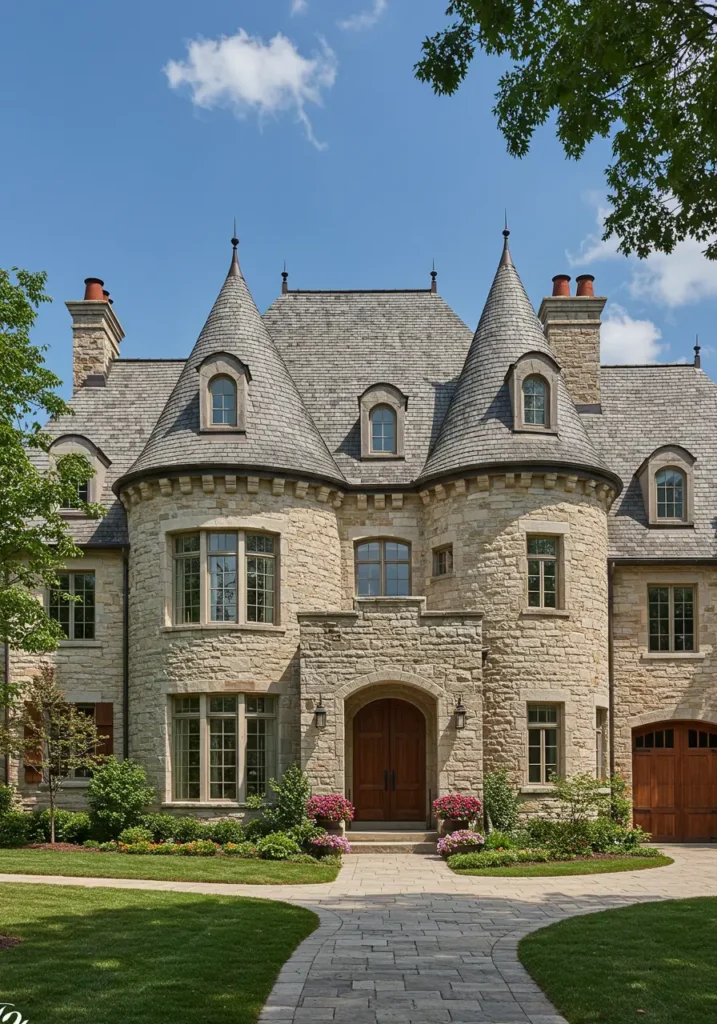
Normandy Chateau luxury exteriors feature dramatic rooflines with multiple levels and turret-like elements. These homes emphasize vertical proportions with tall windows and steep roof pitches that create impressive silhouettes. Natural stone construction with contrasting mortar highlights the craftsmanship and permanence associated with luxury construction.
Circular or conical tower elements add fairy-tale charm while providing unique interior spaces. Heavy wooden doors with decorative hardware create impressive entrances that set expectations for the luxury found throughout the home.
Loire Valley Elegance
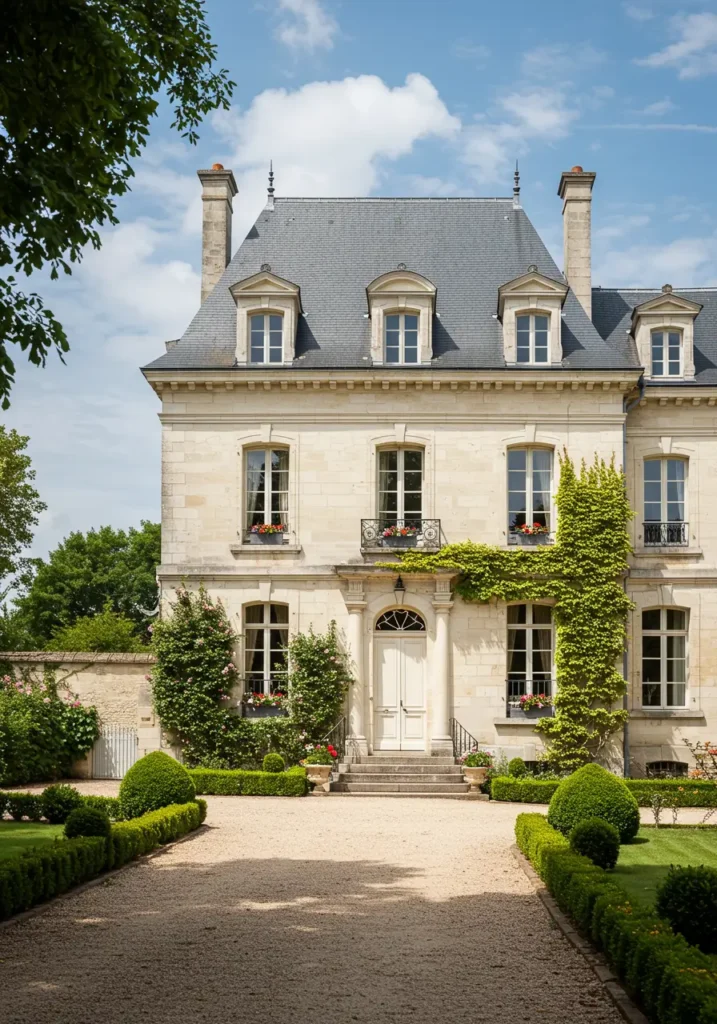
Loire Valley inspired exteriors emphasize symmetry and classical proportions reminiscent of French chateaux. These homes feature limestone or similar light-colored stone construction that creates an elegant, sophisticated appearance. Mansard roofs with dormer windows provide both functionality and authentic French architectural character.
Formal gardens and carefully planned landscaping complement the architectural formality while creating impressive approaches to the main entrance. Window boxes and climbing vines soften the stone surfaces while maintaining the refined French aesthetic.
Rustic French Country
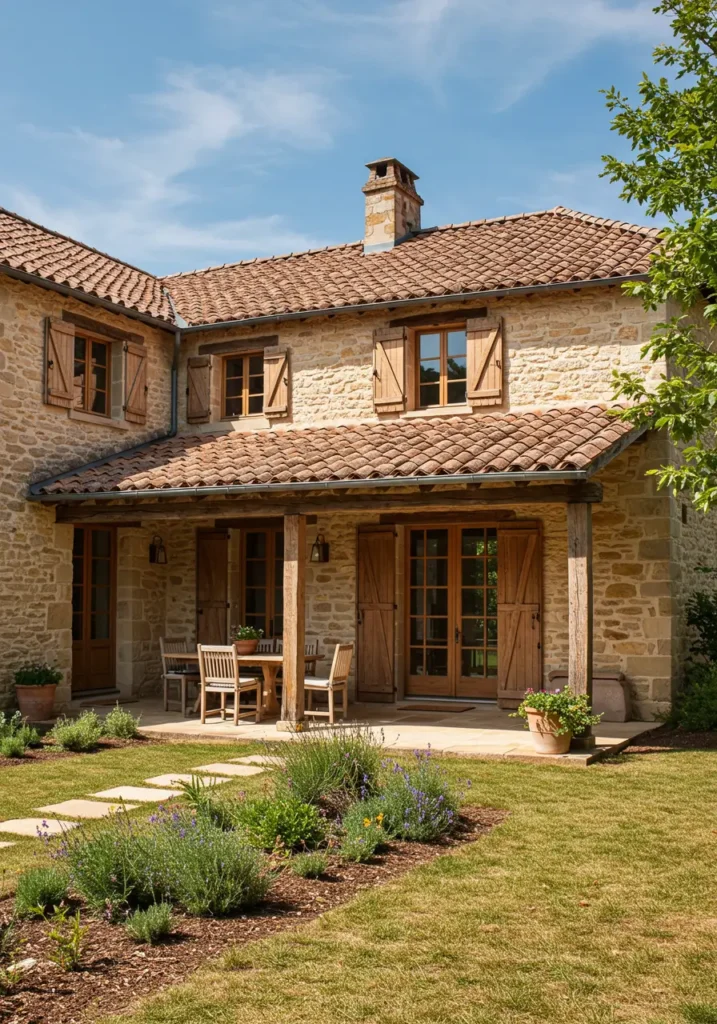
Rustic French Country luxury combines informal materials with sophisticated design principles. These homes feature natural stone walls, wooden shutters, and clay tile roofs that create authentic French countryside appeal. The informality of materials contrasts with careful attention to proportion and detail that elevates the overall design to luxury status.
Covered outdoor living spaces extend the home’s functionality while providing protection from weather. Herb gardens and casual landscaping maintain the country aesthetic while providing functional outdoor spaces for entertaining and relaxation.
Contemporary Luxury Minimalism
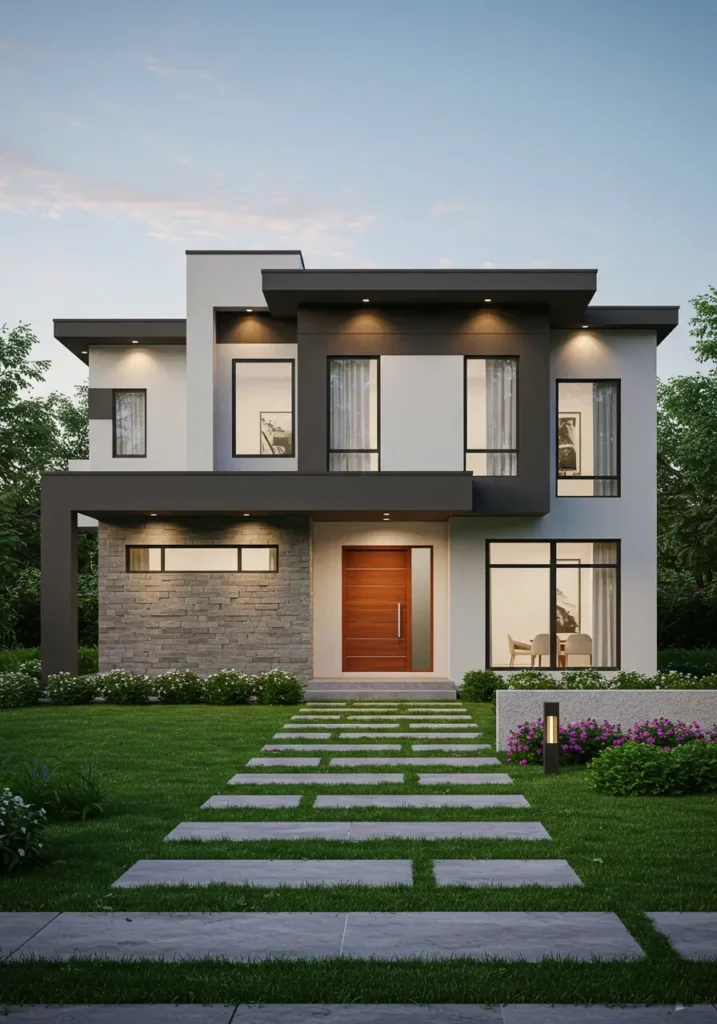
Contemporary luxury house exteriors embrace clean lines, geometric forms, and premium materials to create sophisticated modern statements. These designs eliminate unnecessary ornamentation in favor of perfect proportions and high-quality finishes. Large expanses of glass connect interior and exterior spaces while showcasing carefully planned interior design.
Glass and Steel Modern
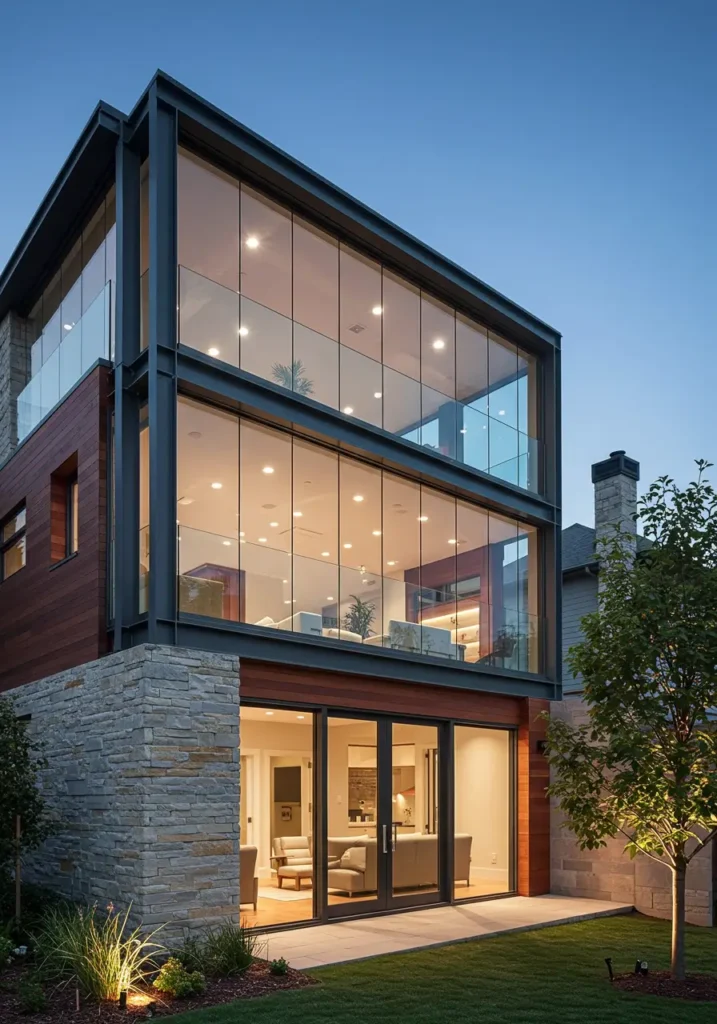
Glass and steel luxury exteriors maximize transparency and light while maintaining privacy through strategic placement and screening. Floor-to-ceiling windows create dramatic facades that blur the boundaries between indoor and outdoor living. Steel framing provides structural support while contributing to the industrial luxury aesthetic.
Natural materials like stone or wood provide warmth and texture that balance the coolness of glass and steel. These combinations create visual interest while maintaining the clean, sophisticated appearance that defines contemporary luxury design.
Concrete and Stone Fusion
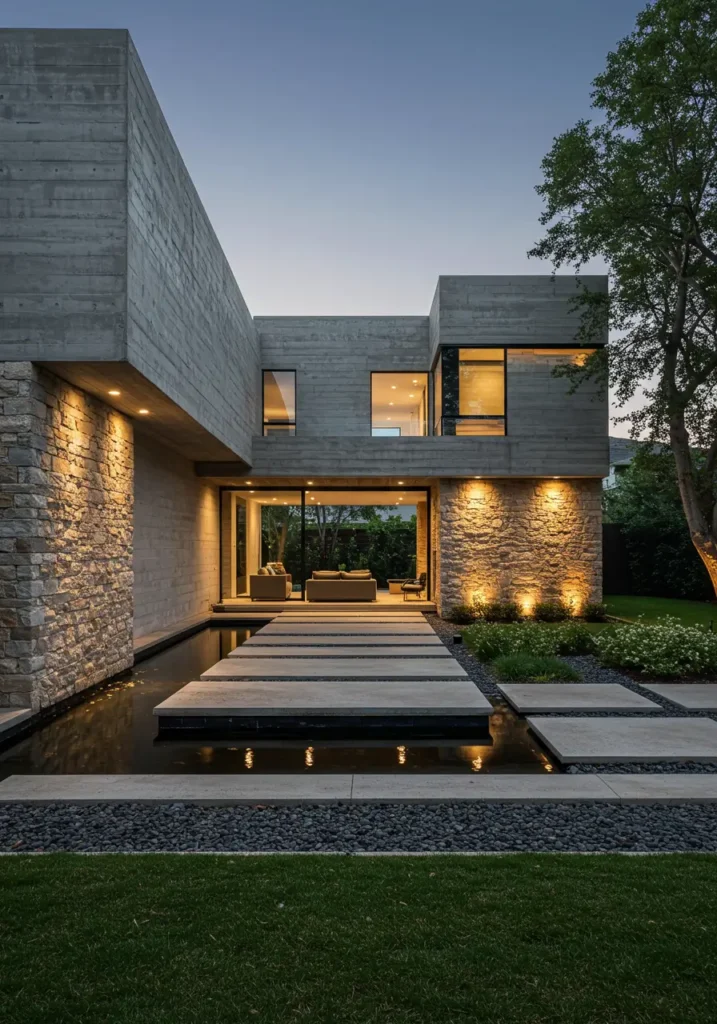
Concrete and stone luxury exteriors emphasize texture and permanence through the careful combination of industrial and natural materials. Exposed concrete provides smooth, geometric surfaces that contrast beautifully with rough stone accents. These material combinations create sophisticated facades that appear both modern and timeless.
Water features and carefully planned landscaping soften the hard edges of concrete while complementing the natural stone elements. The overall effect is both dramatic and livable, perfect for luxury homes that make bold architectural statements.
Tudor and English Manor Styles
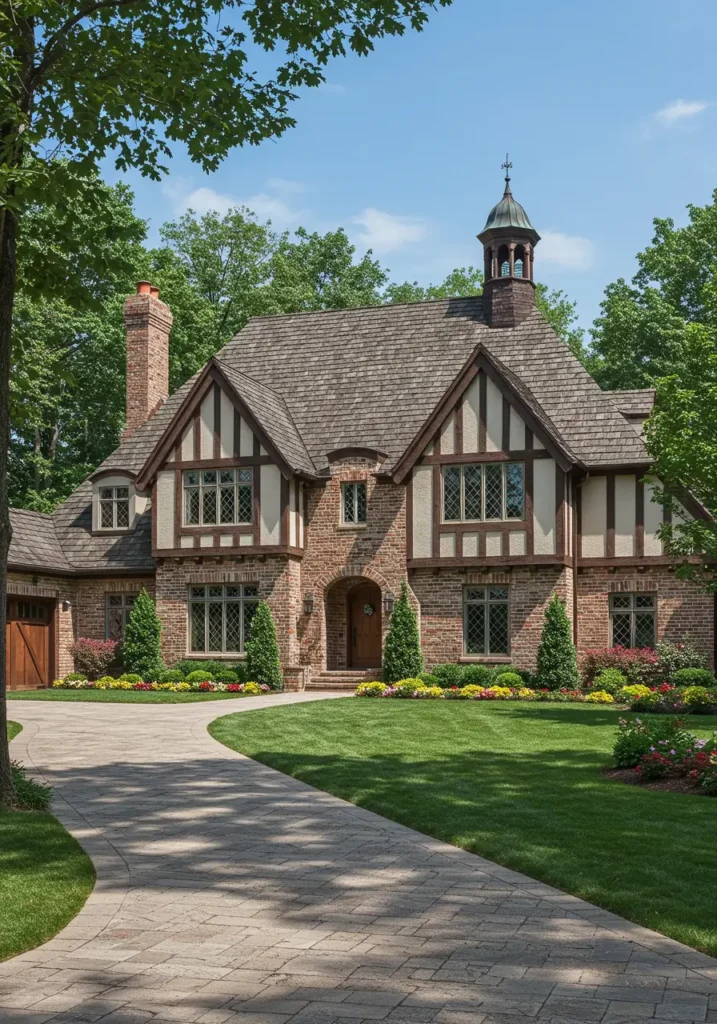
Tudor luxury house exteriors evoke the romance and craftsmanship of English manor homes. These designs feature distinctive half-timbering, steep-pitched roofs, and asymmetrical facades that create visual interest and historical character. The combination of materials and textures provides rich, sophisticated exteriors that improve with age.
Traditional Tudor Elements
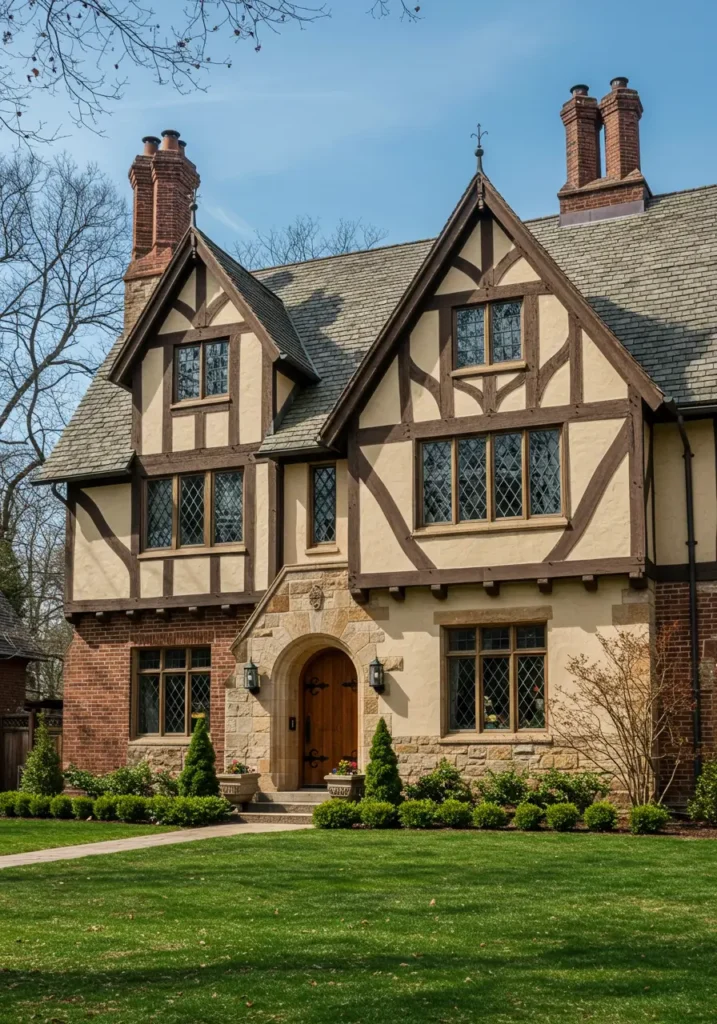
Traditional Tudor luxury homes feature decorative half-timbering that creates striking geometric patterns across stucco or brick surfaces. Steep gable roofs with multiple intersecting planes create complex, interesting rooflines. Diamond-paned windows in casement or double-hung configurations maintain authentic Tudor character while providing excellent natural light.
Massive chimneys with decorative caps and multiple flues emphasize the home’s substantial construction and period authenticity. Entry doors are typically arched with heavy wooden construction and decorative hardware that reflects medieval craftsmanship traditions.
English Cotswold Cottage
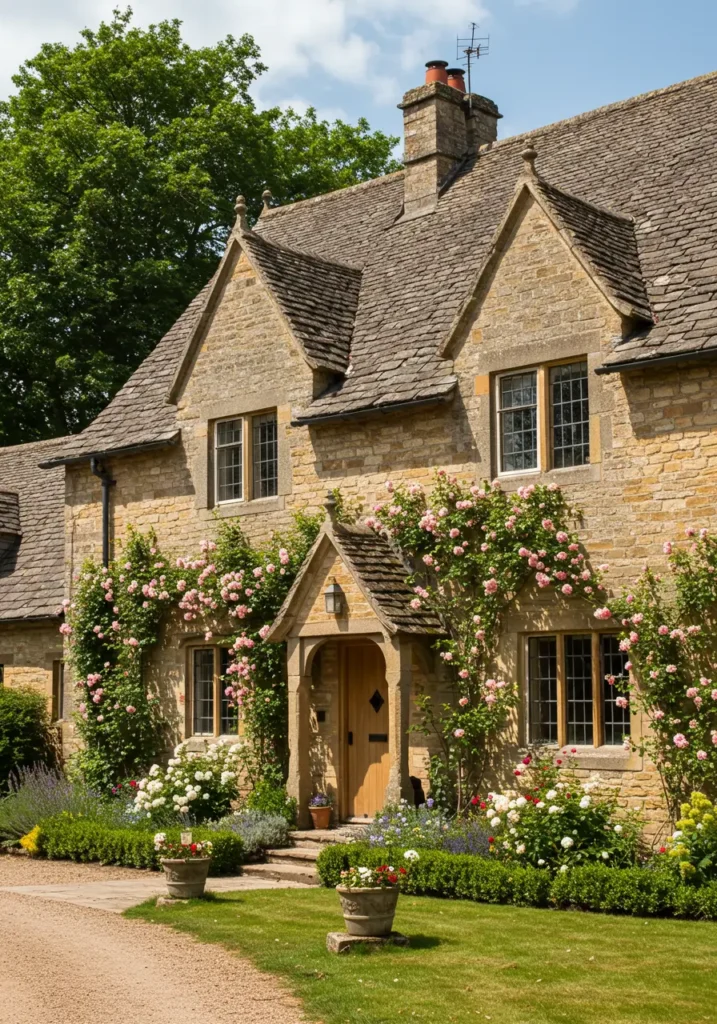
English Cotswold luxury exteriors emphasize natural stone construction and organic, informal design principles. These homes appear to grow from the landscape through the use of local stone materials and traditional construction techniques. Thatched or slate roofs create authentic English countryside character while providing excellent weather protection.
Climbing roses and cottage gardens complete the romantic English aesthetic while providing seasonal color and fragrance. The overall effect is both luxurious and welcoming, perfect for homes that emphasize comfort and natural beauty.
Neoclassical and Greek Revival Grandeur
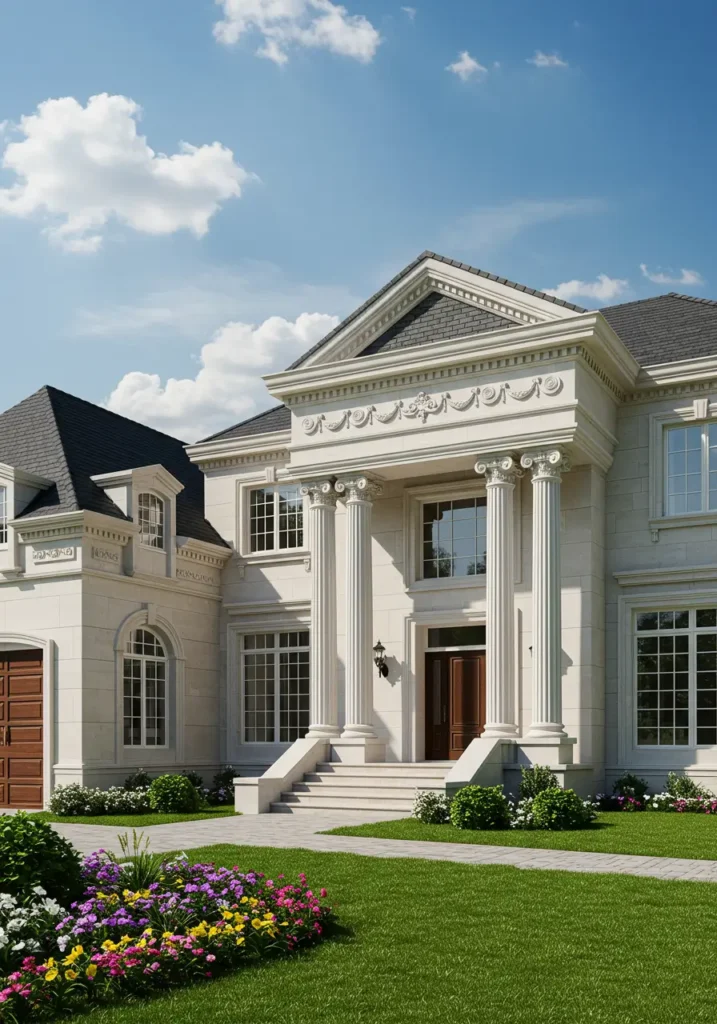
Neoclassical luxury house exteriors draw inspiration from ancient Greek and Roman architecture to create impressive, formal facades. These designs emphasize symmetry, classical proportions, and decorative elements that convey permanence and prestige. Columns, pediments, and other classical details create sophisticated exteriors that never go out of style.
Greek Revival Columns
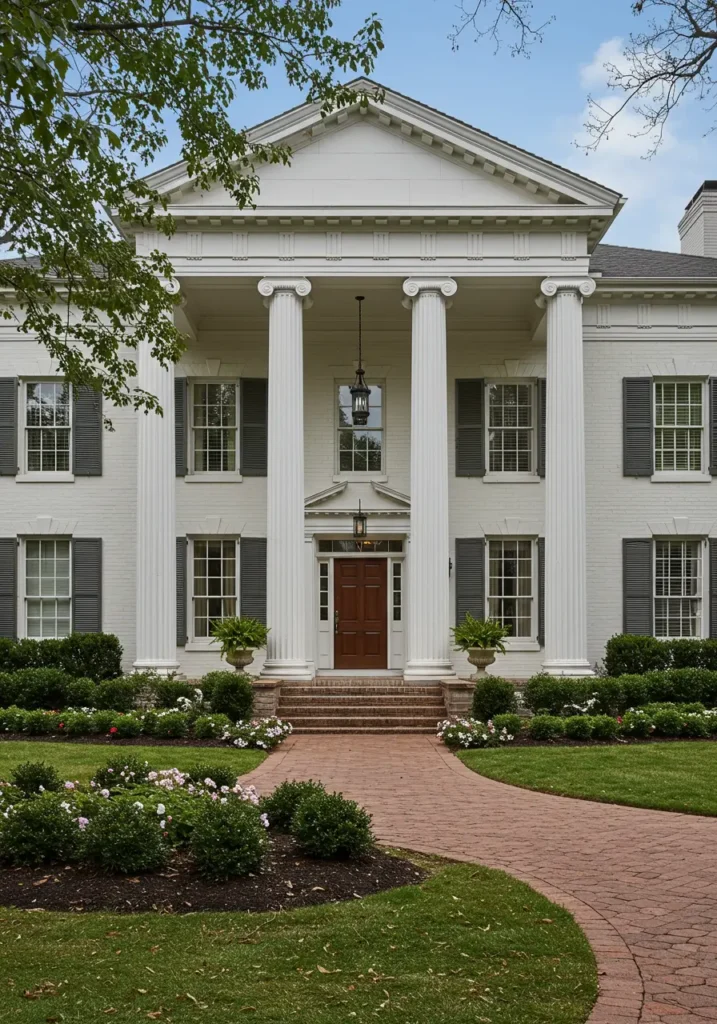
Greek Revival luxury homes feature impressive columned porticos that create grand entrances and covered outdoor spaces. Doric, Ionic, or Corinthian columns support pediments that frame the main entrance while providing classical architectural character. These elements create impressive facades that convey both luxury and historical significance.
White or cream-colored exteriors with contrasting trim emphasize the classical details while creating timeless, sophisticated appearances. Symmetrical window placement and formal landscaping complete the Greek Revival aesthetic.
Roman Villa Influences
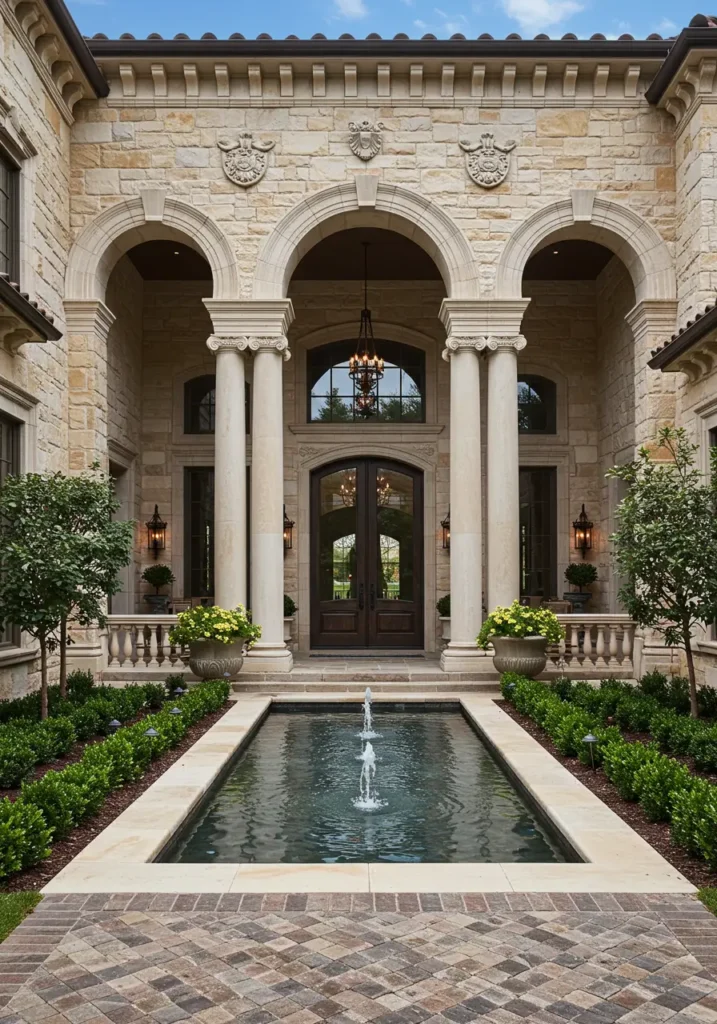
Roman Villa luxury exteriors incorporate arched elements, decorative stonework, and formal symmetry to create impressive, palatial appearances. These homes often feature courtyards, loggias, and other outdoor living spaces that reflect Roman architectural traditions while providing modern luxury amenities.
Natural stone construction with detailed carving and decorative elements emphasizes craftsmanship and permanence. Water features and formal gardens complement the architectural grandeur while creating sophisticated outdoor entertainment spaces.
Craftsman and Prairie School Luxury
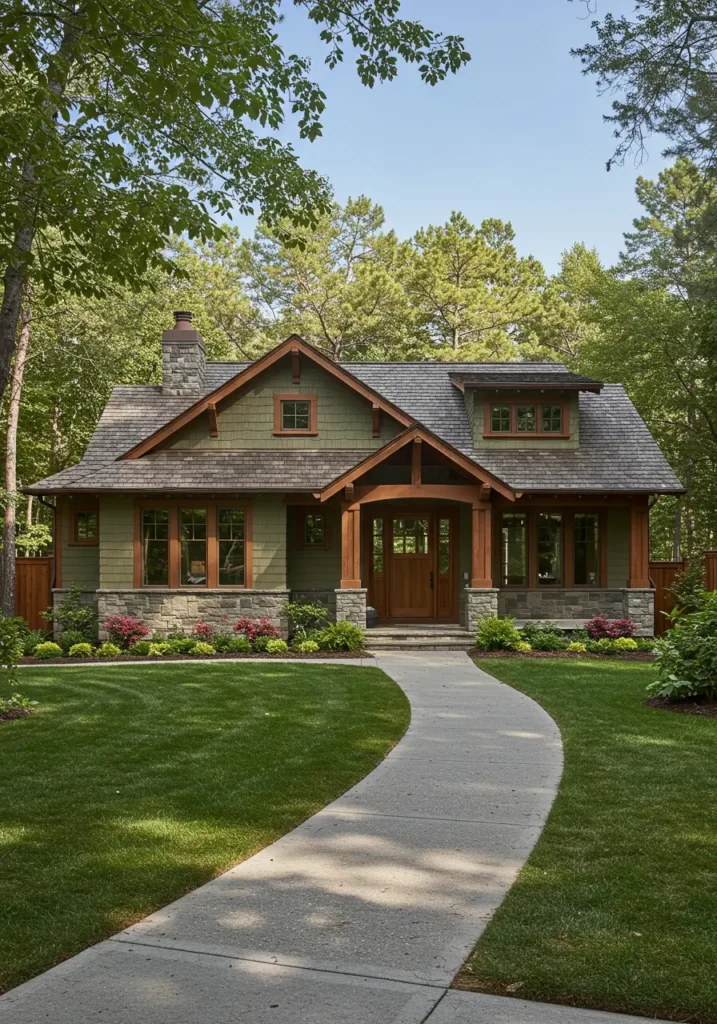
Craftsman luxury house exteriors emphasize natural materials, handcrafted details, and integration with the surrounding landscape. These designs celebrate traditional building techniques while incorporating modern amenities and luxury finishes. The result is sophisticated exteriors that feel both timeless and contemporary.
Arts and Crafts Movement
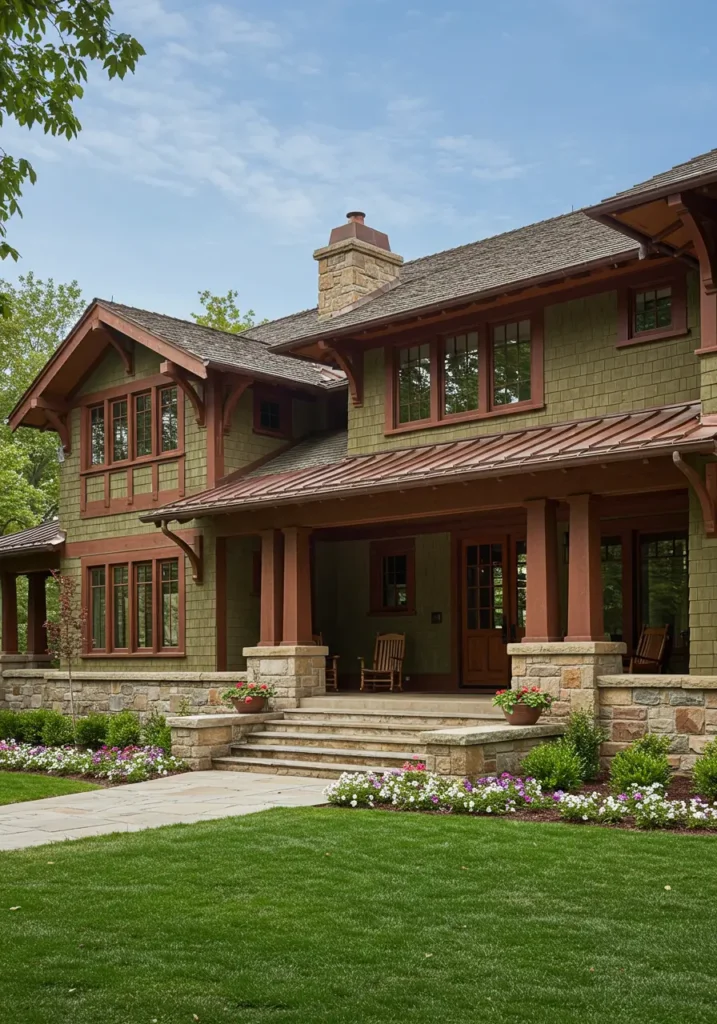
Arts and Crafts luxury homes feature extensive use of natural materials like stone, wood, and copper that develop beautiful patinas over time. Exposed rafter tails, decorative brackets, and handcrafted details emphasize the human element in construction while creating sophisticated architectural character.
Large covered porches extend the living space outdoors while providing protection from weather. Built-in planters and integrated landscaping blur the boundaries between architecture and nature, creating seamless transitions that enhance the overall luxury experience.
Frank Lloyd Wright Prairie Style
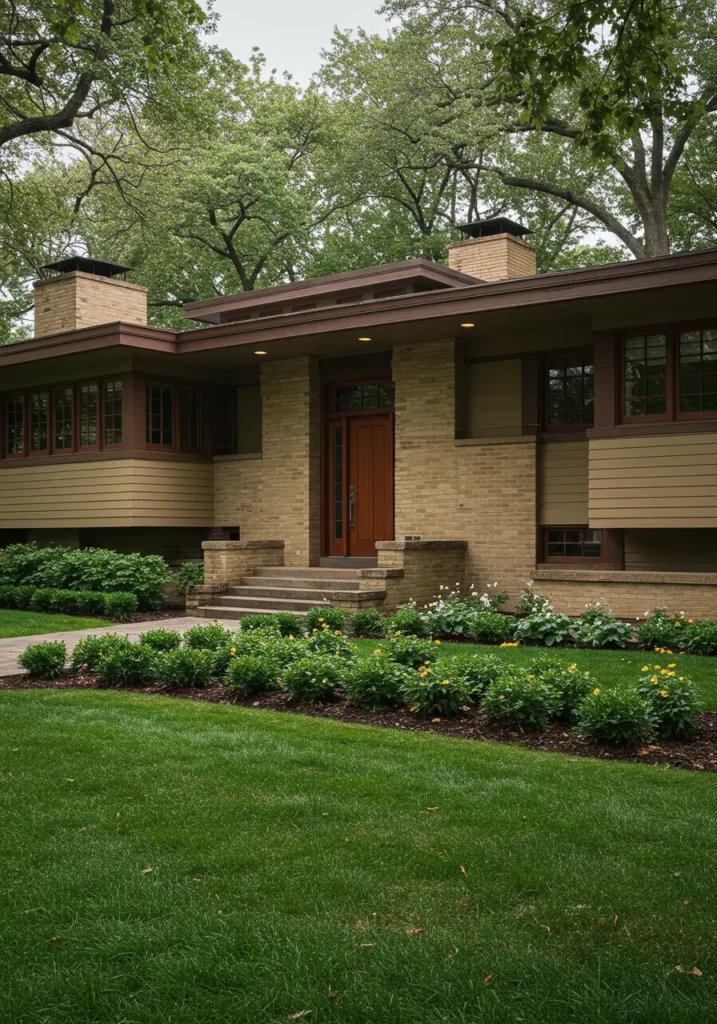
Prairie Style luxury exteriors emphasize horizontal lines, flat or low-pitched roofs, and extensive use of natural materials. These homes appear to grow from the landscape through careful integration with site conditions and surrounding vegetation. Ribbon windows and geometric details create sophisticated facades that balance formality with natural beauty.
Built-in furniture and architectural elements extend the design philosophy throughout the home while creating unique, custom luxury features. The overall effect is both dramatic and livable, perfect for luxury homes that emphasize connection with nature.
Also Read: 25 Companion Planting Combinations for a Thriving Garden
Victorian and Queen Anne Elegance
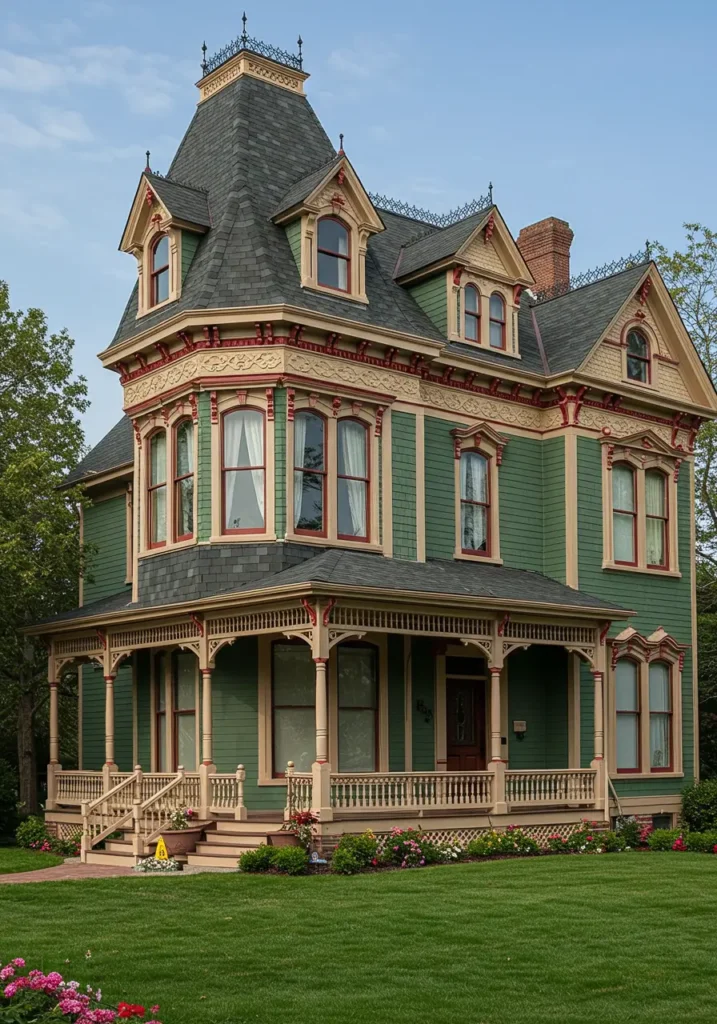
Victorian luxury house exteriors celebrate ornate details, complex rooflines, and rich color combinations that create impressive, romantic facades. These designs emphasize craftsmanship through decorative elements like gingerbread trim, bay windows, and wraparound porches that provide both beauty and functionality.
Queen Anne Painted Ladies
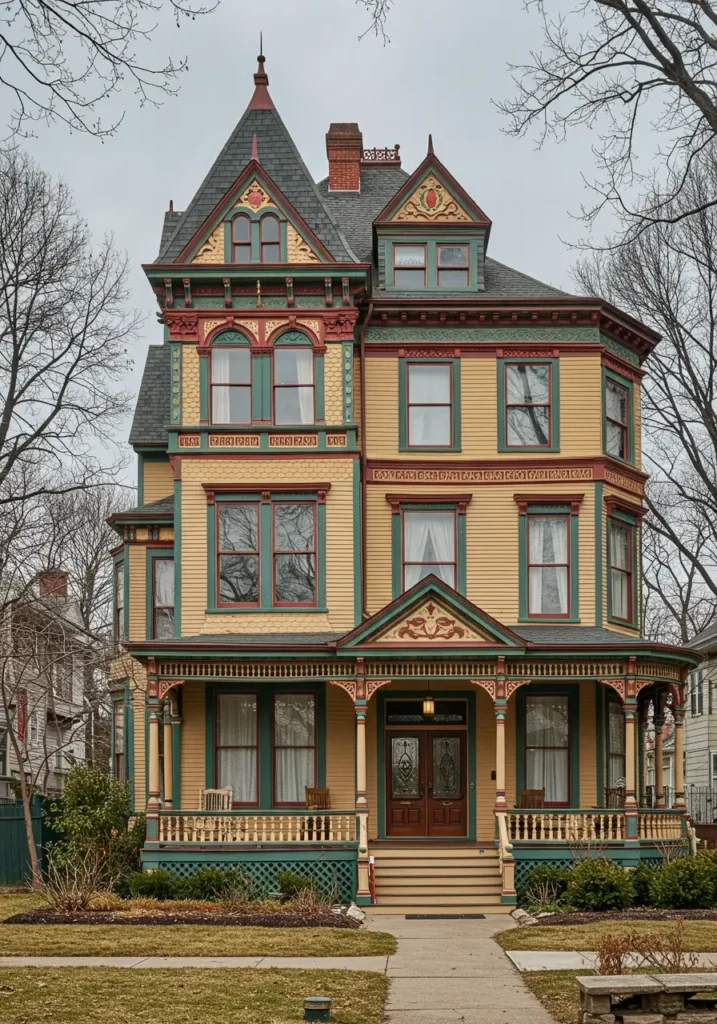
Queen Anne luxury homes feature asymmetrical facades with towers, bay windows, and decorative trim that creates visual interest and period authenticity. Multiple colors highlight architectural details while creating sophisticated color schemes that enhance the overall design complexity.
Wraparound porches with decorative columns and railings provide outdoor living space while creating impressive covered entrances. Stained glass windows and decorative hardware add luxury details that reflect the Victorian era’s emphasis on craftsmanship and ornamentation.
Second Empire Mansard
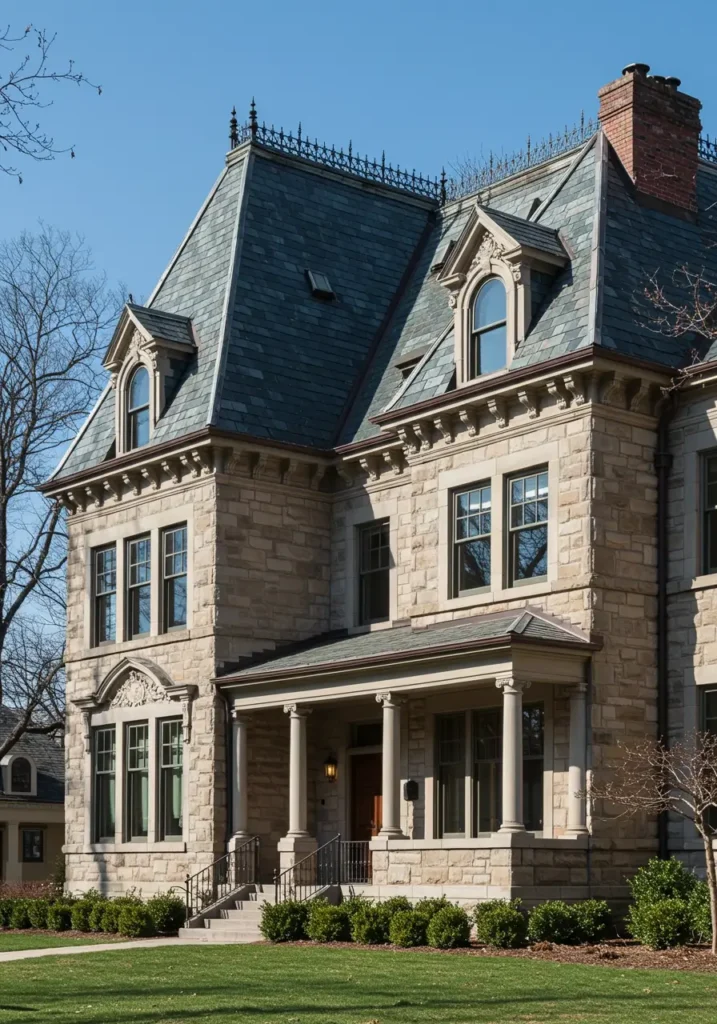
Second Empire luxury exteriors feature distinctive mansard roofs with dormer windows that create additional living space while providing dramatic architectural character. These homes emphasize vertical proportions with tall windows and decorative cornices that create impressive, formal facades.
Natural slate roofing and detailed ironwork add luxury elements while maintaining historical authenticity. The overall effect is both grand and sophisticated, perfect for luxury homes that make bold architectural statements.
Regional American Luxury Styles
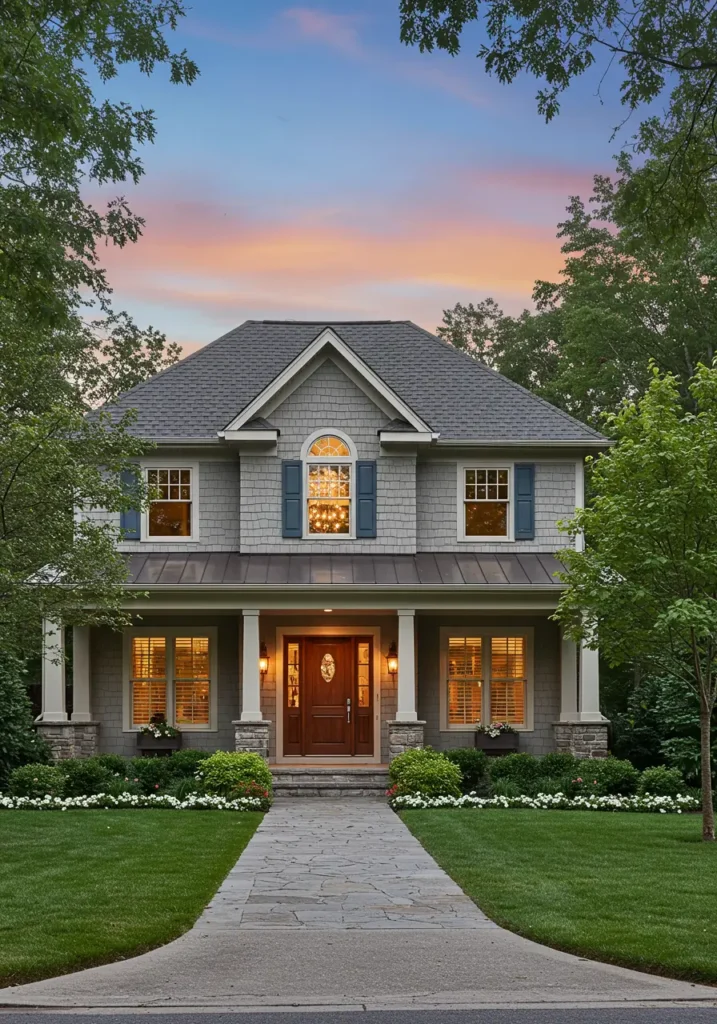
Regional American luxury house exteriors reflect local climate conditions, available materials, and cultural influences while maintaining sophisticated design principles. These styles demonstrate how luxury design adapts to different geographic regions while creating distinctive, impressive exteriors.
Southern Plantation Style
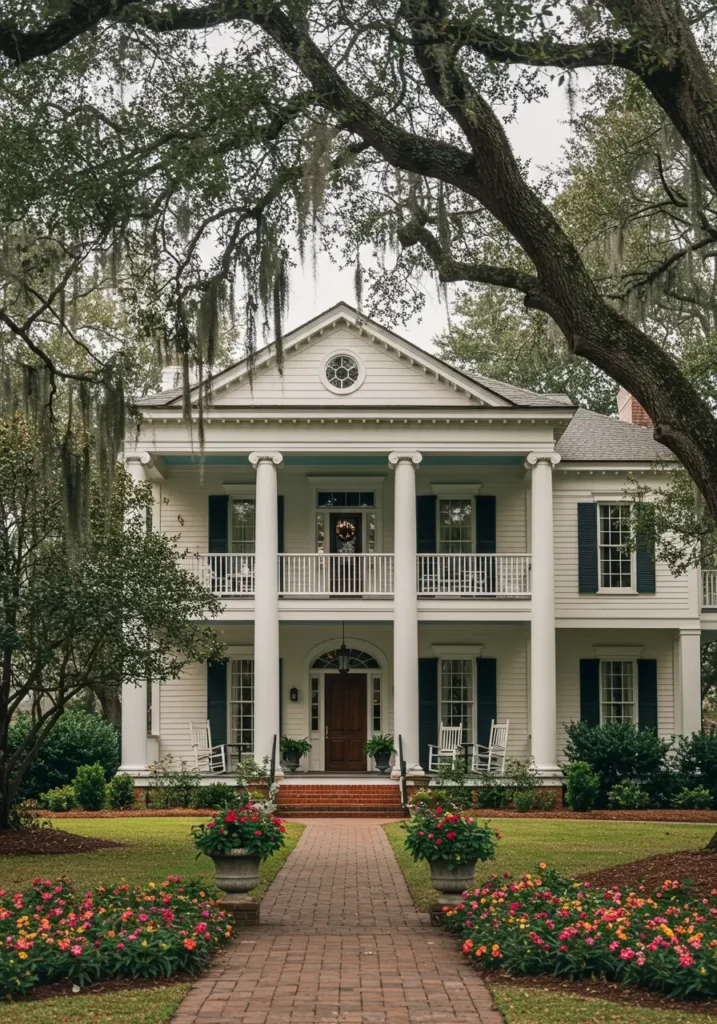
Southern Plantation luxury exteriors feature massive columns, wraparound porches, and symmetrical facades that create impressive, formal approaches. These homes emphasize outdoor living through extensive covered porches and outdoor entertaining spaces that provide comfort in hot, humid climates.
White or cream-colored exteriors with dark shutters create classic Southern elegance while reflecting heat and providing visual contrast. Formal landscaping with moss-draped trees and seasonal flowers completes the plantation aesthetic while providing natural cooling and beauty.
Southwestern Adobe Luxury
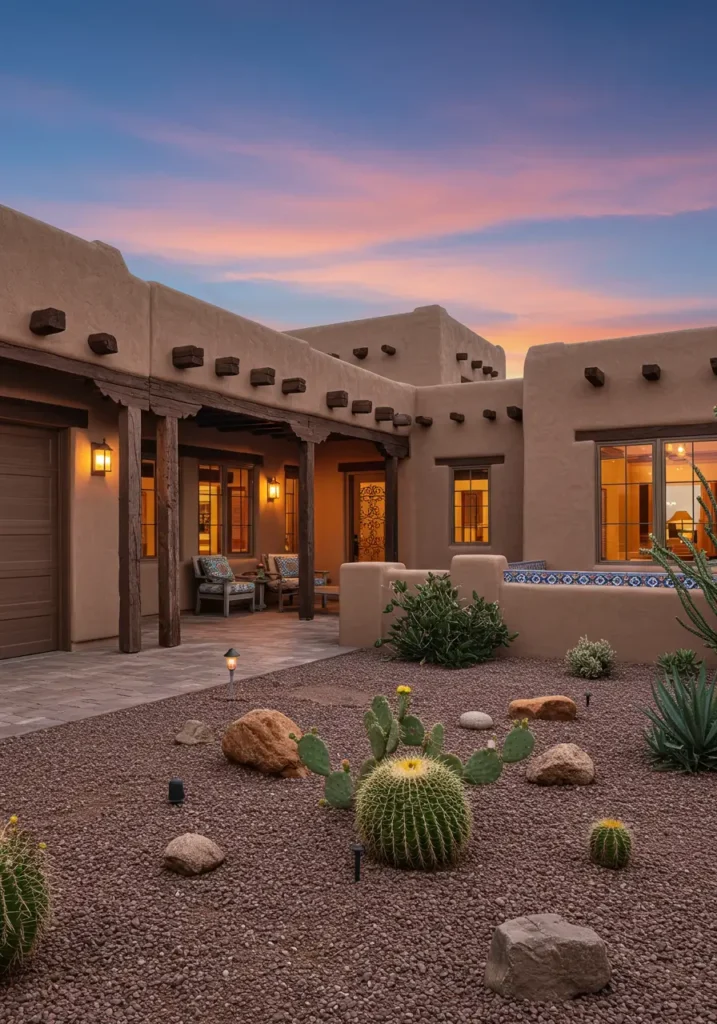
Southwestern luxury exteriors feature thick adobe or stucco walls, flat roofs with parapets, and earth-tone color palettes that reflect the desert environment. These homes emphasize outdoor living through courtyards, covered portales, and rooftop terraces that provide comfortable outdoor spaces year-round.
Vigas (wooden beams) extending through walls and decorative tile work add authentic Southwestern character while providing visual interest and cultural authenticity. Native plant landscaping with cacti, succulents, and drought-tolerant plants creates beautiful, sustainable outdoor environments.
Choosing the Right Style for Your Location
Selecting the perfect luxury house exterior design requires consideration of climate, local architectural traditions, and personal preferences. Different styles perform better in various climates and integrate more successfully with regional architectural contexts. Understanding these factors helps ensure your luxury home exterior remains both beautiful and functional for years to come.
Climate considerations significantly impact material choices and design elements. Mediterranean and Southwestern styles work well in hot, dry climates, while Tudor and Colonial styles are better suited to temperate regions with seasonal weather changes. Contemporary styles with extensive glass work best in moderate climates where heating and cooling costs remain reasonable.
Local building codes and homeowners’ association requirements may influence your design choices. Some communities have architectural guidelines that favor certain styles or restrict others. Understanding these requirements early in the design process helps avoid costly changes later in construction.
Budget considerations affect both initial construction costs and long-term maintenance expenses. Some luxury exterior styles require more expensive materials or specialized craftsmanship that increases both construction and maintenance costs. Balancing your aesthetic preferences with practical budget considerations ensures a successful luxury home exterior project.
Creating Your Perfect Luxury House Exterior
Luxury house exterior designs offer endless possibilities for creating impressive, sophisticated homes that reflect your personal style and enhance your property’s value. The key to success lies in understanding the fundamental principles that define luxury design while adapting them to your specific needs, location, and budget.
Remember that true luxury comes from quality materials, excellent craftsmanship, and thoughtful design rather than simply expensive finishes. Focus on creating well-proportioned, harmonious exteriors that integrate seamlessly with their surroundings while providing the functionality and comfort you desire.
Consider working with experienced architects and designers who understand luxury home construction and can guide you through the complex decisions involved in creating exceptional exterior designs. Their expertise helps ensure your investment results in a truly luxurious home that provides years of enjoyment and pride.
Your luxury house exterior should reflect your lifestyle, preferences, and aspirations while respecting the architectural traditions and environmental conditions of your location. When these elements come together successfully, the result is a home exterior that serves as both a personal sanctuary and an impressive architectural statement.
Frequently Asked Questions
What makes a house exterior design truly luxurious?
Luxury house exterior designs are defined by superior materials, excellent craftsmanship, and thoughtful proportions rather than simply expensive finishes. Key elements include natural stone, high-quality brick or stucco, premium roofing materials, custom millwork, and attention to architectural details. The integration of landscaping, outdoor living spaces, and quality hardware also contributes to the overall luxury impression.
How do I choose the right architectural style for my climate?
Climate considerations significantly impact exterior design choices. Mediterranean and Southwestern styles work well in hot, dry climates with their thick walls and outdoor living emphasis. Colonial and Tudor styles suit temperate climates with seasonal changes. Contemporary designs with extensive glass perform best in moderate climates. Consider local weather patterns, energy efficiency, and maintenance requirements when selecting your style.
What are the most important materials for luxury house exteriors?
Premium exterior materials include natural stone (limestone, granite, sandstone), high-quality brick, cedar or mahogany siding, slate or clay tile roofing, and copper or bronze hardware and trim. These materials age beautifully, provide excellent durability, and create the sophisticated appearance associated with luxury construction. The key is selecting materials appropriate for your architectural style and climate.
How much should I budget for a luxury house exterior renovation?
Luxury exterior renovations typically range from $50,000 to $200,000 or more, depending on the scope of work, materials selected, and regional labor costs. Major renovations involving siding, roofing, windows, and landscaping can cost $100-300 per square foot of exterior wall area. Premium materials and custom details increase costs but also enhance long-term value and curb appeal.
Can I mix different architectural styles in my luxury house exterior?
Successful style mixing requires careful attention to proportions, materials, and overall harmony. Elements from complementary styles can work together when they share similar scales and material palettes. For example, combining Mediterranean and Contemporary elements through shared stone materials and clean lines can create unique, sophisticated exteriors. However, dramatic style contrasts should be avoided as they can appear cluttered and reduce the overall luxury impression.
